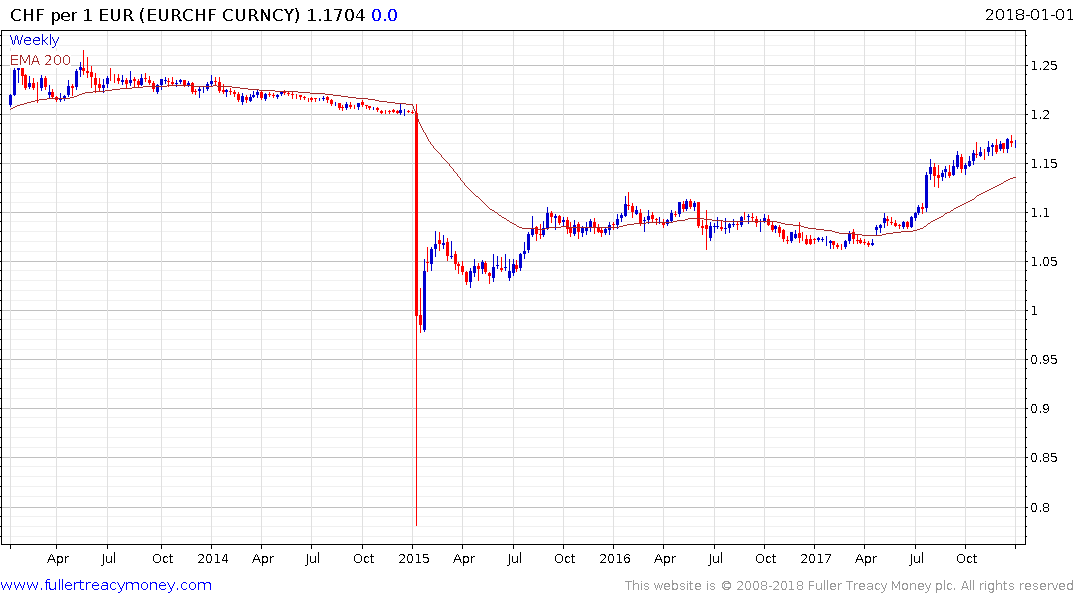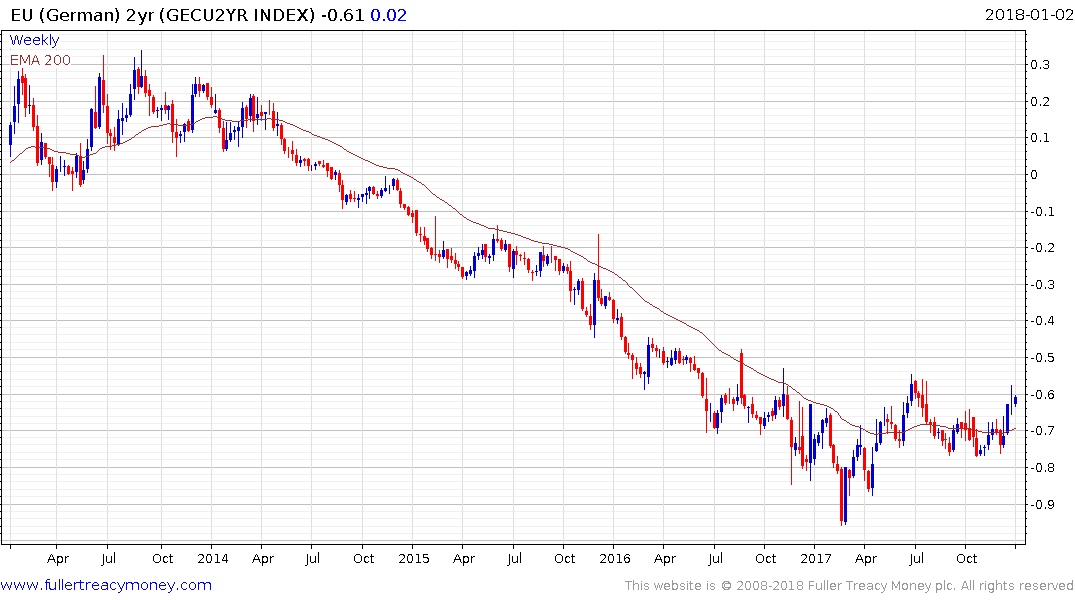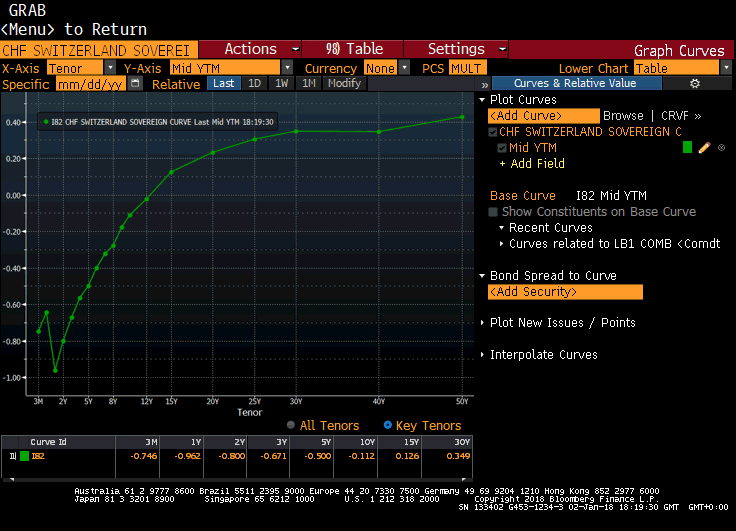Euro Tests Three-Year High as End-of-Stimulus Fear Batters Bonds
This article by John Ainger and Samuel Potter for Bloomberg may be of interest to subscribers. Here is a section:
The currency jumped, sapping stocks, and bonds slid as a slew of data signaled a potential uptick in inflation in the euro area, after manufacturing growth accelerated to a record in December. The numbers followed comments at the weekend from European Central Bank policy maker Benoit Coeure, who said that unless inflation disappointed there’s a “reasonable chance” the central bank’s extension of QE in October could be the final one.
While Coeure didn’t mention the exchange rate, his comments were a boon for euro bulls and coincided with a period of ongoing dollar weakness. The common currency’s strength is translating into a painful start to the year for Europe’s export-heavy stock markets, while bonds have picked up where 2017 left off, with benchmark German bund yields rising to the highest since October.
“The ECB suggestion that bond buying will not be extended is likely behind the recent push higher in the euro,” said Neil Jones, head of currency sales at Mizuho Bank Ltd. in London. “My sense is the euro will extend beyond its three-year high in the next two weeks.”
If I had to pick one market to watch on a daily basis in 2018 it is German Bunds. Germany has benefitted enormously from the ECB’s bond buying program and has enjoyed borrowing costs that were previously unimaginable. With negative yields on bonds out to seven-year maturities there is significant scope for re-rating when the ECB eventually exits its program.
Swiss government bonds are at negative yields out to 12-year maturities and the SNB is unlikely to change its aggressively loose monetary policy until the ECB moves first. The Franc has retraced most of the 2015 appreciation but CHF1.20 represents an important Rubicon for the Euro with a sustained move above that level required to signal a return to medium-term demand dominance.


Meanwhile German 2-year yields have been ranging below -0.5% since early 2017 which has represented a loss of momentum for the previous downtrend. A sustained move above -0.5% would represent a return to supply dominance beyond the short term and would potentially signal higher borrowing costs for all peripheral bonds valued against German debt.
Back to top


